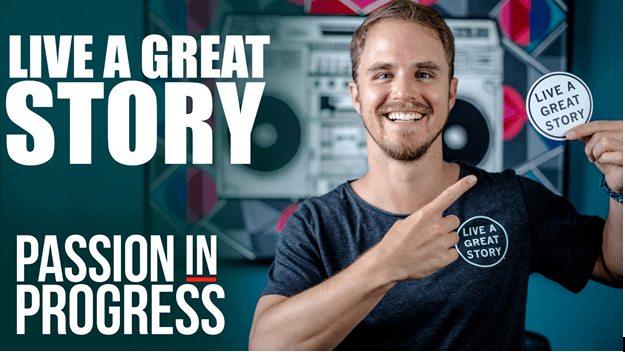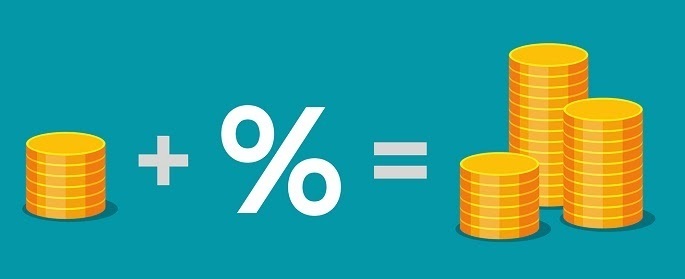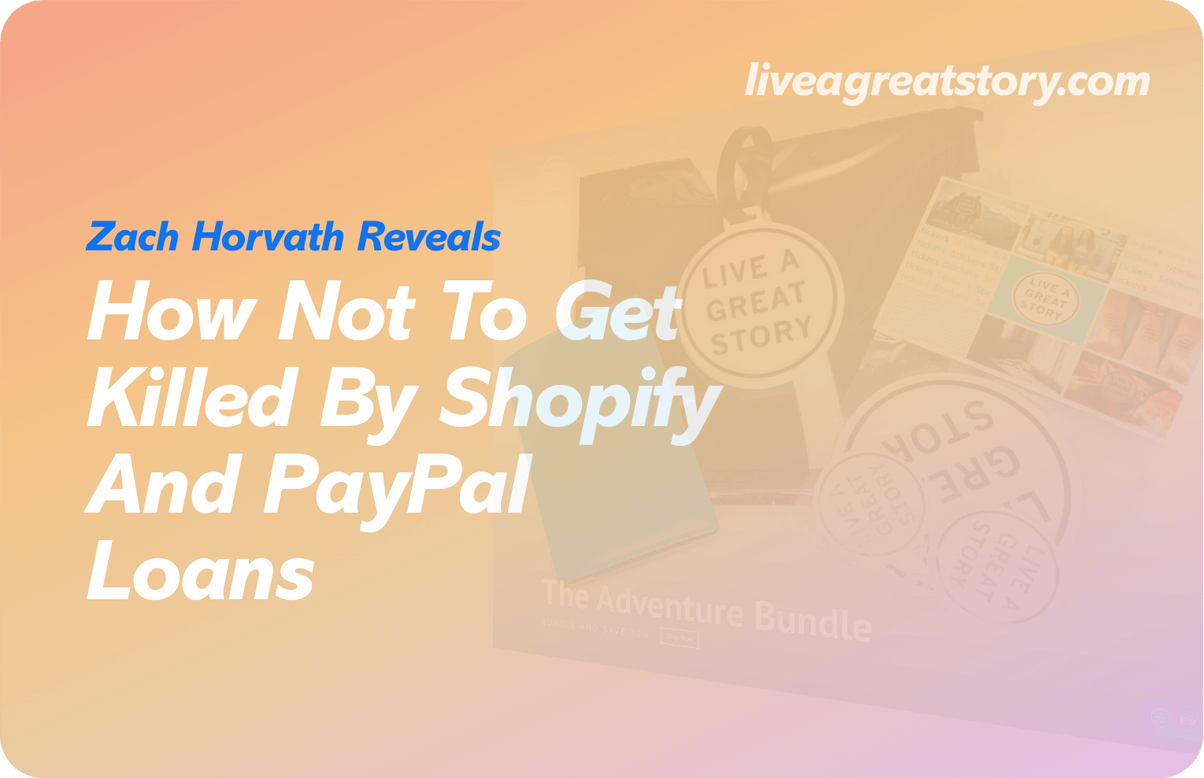Anyone who has followed me or FunnelDash for more than 10 minutes knows I’m a BIG fan of using other people’s money and leveraging debt to free up cash flow to fuel massive growth.
But only if you do it right.
The trail to the top of the 8-to-9-figure Mt.Everest of ultimate financial success is littered with the cold dead bodies of companies whose CEOs didn’t know their numbers and got way out in front of their revenue in terms of taking out loans and paying off debt.
Today I want to share the cautionary financial tale of Zach Horvath whose Live a Great Story lifestyle brand has taken off like wildfire in the past few years. He was a recent guest on our new Rich Ad Poor Ad podcast and shared his near fatal experience with debt management.
In case you’re not familiar with Live a Great Story, they're all over Austin, Texas. Their stickers are global. Their flags are global. It's just a really bad-ass global business with a huge impact on a local community. They've probably spent roughly six figures on ads on Facebook and Instagram, but they kill it on the social constants there.
So how does Live A Great Story make any kind of real money selling stickers?
Basically Zach works to find out what the best product is with the best margins and the best overall price point so that they can run ads as a loss leader or at least a break even to get people into the brand, and then upsell them along the way.
And it’s working. Live a Great Story has a return customer rate of about 35% and a pretty robust LTD.
But as we all know, scaling a business requires more cash than most companies generate in revenue. And it has to be there when you need it, not just when the bucks are rolling in during 3rd and 4th quarter.
Say hello to Shopify Capital,
Zach’s got quite a bit of experience with a lot of the different alternative growth capital providers and lenders out there in the marketplace from Shopify Capital to PayPal LoanBuilder to ClearBank. He’s also a master of credit card travel points.
That experience has not come without pitfalls. So I asked him about what advice he had for other eCommerce businesses that are thinking about taking out some debt to scale up. What would he encourage them to do? What would he caution them against doing? Here’s what he had to say:

1. Don’t do anything until you KNOW your numbers.
“I would definitely suggest really getting your finances dialed in. So much of it is knowing, that's for sure, a basic principle of business and knowing even your ROAS and being able to calculate all of that in your return. I saw the funny TikTok the other day, he's like, "I made 30 grand drop shipping this month." How much profit? He's like, "But I made 30 grand drop shipping." So definitely if you're going to run a business, you got to have that dialed in.
2. Don’t get blinded by lender love.
“What's really cool that I've found really last year as I started scaling up pretty significantly was how much people want to give you money when you're doing numbers.”

And so I've definitely taken out a couple of rounds of funding and scaled up the offering, I guess, for what ... starting with Shopify, and I think also PayPal, but I think on my Shopify loan, I ended up taking out, altogether over the three loans, about $77,000 because I started branching out into more options last year. So I hosted a conference. I was bringing on team members and didn't quite have the revenue generation to scale the team. And so I waited and looked at my options, and it was really cool to have that. Basically, with a push of a button, they'll just deposit serious five figures in your account and with not too much interest, but I definitely realized in hindsight, the difference of the interest. So I ended up paying about twice as much for my PayPal loan as the Shopify one.”
3. Mind your margins.
“Then also think about the margins you're paying. The way that those work is that the lenders skim off the top of your sales, of your revenue. So they give you that money upfront, and then every month or every purchase that goes through the processor, they skim off 5%, 10%, 20%, I guess, even up to 30% is an option.
And so really when you're thinking about ... most businesses don't have a margin that high, especially once you're spending ads and really scaling. So that can be a pretty serious situation to get into if you're not totally dialed in on your numbers, knowing exactly what your profit margin is and your runway and how much you can afford to pay back on a daily basis because it can actually reverse and get you underwater pretty quickly if you're paying, and then you're running ads on top of it. So you're spending money there, and you are not profiting enough to both pay back that loan, and then also pay for your cost of goods sold and everything else.”
4. Know how to rate interest rates.
“So my Shopify loan takes 10% of my revenue, which is pretty good, right? And I think that it costs me about 15% interest on the loan amount. I'm not totally sure of those numbers off the top of my head right now, but, which is decent. It's a pretty significant number, but also, it's hands off. I'm not trying to balance stuff and sending checks to the small business loan people, SBA loans, and trying to figure out how to pay back investors and things like that. So it makes it a lot more simple. But then, like I said, that was on Shopify, but the PayPal one was almost double that. So I think I paid up to 20% interest on my initial chunk. And then also to pay that back, I'm paying 20%.

So I'm balancing basically a 15% margin that I'm paying back to pay off those loans on a daily basis, which is crazy. Let's say I do a hundred grand, that's 15 grand off the top that I'm just writing a check to PayPal or Shopify, which is pretty crazy to think about because it's a serious chunk of money at that point where I'm trying to get out of that.
Once I pay that off, that's all profit, which is a cool finish line to look at is that as I'm scaling, I know that my balance sheet, I'm just constantly writing these checks back to PayPal and Shopify, but soon enough I'll be writing checks in my pocket, right? “
5. Don’t get tripped up on repayment terms.
“ For PayPal, it's 3 to $4,000 every 90 days. So you could take years to pay it back if you had to. Then with Shopify, what ended up happening is the way that, which I still haven't quite figured this out yet, because I both have a Shopify checkout Shop Pay. Then also PayPal diverts people to different checkouts kind of randomly. I really don't understand how it does that.
And so it ends up diverting way more people to PayPal versus Shopify. And so I'm actually not meeting my minimum spend for Shopify's loan or whatever the repayment is. And so they debit that from my account once a month, at least that minimum chunk, on top of the other 10% that I'm paying off. So there's not a time period on it. They just want their money back, but obviously if you stop paying it, then it gets into some serious ‘Hey, we've got to talk about this. Where's our money,’ type loan shark deals.”
6. Learn from my mistakes.
“ Last year, I was doing really good revenue and scaling pretty high numbers. So I got up to almost about six figures a month in revenue for a couple months straight. And so I was basically just scaling. And at that point, I wanted to grow more of a brand. So I wanted to bring on content creators.
The biggest thing that bit me was influencer marketing. I ended up paying out a serious chunk for about a three month test on influencers, which was a total, absolute 100% waste of money.
Also, a good chunk of what I was borrowing went to product. So I was doing these pretty serious numbers, and I was kind of forecasting, "Okay, well, I had a crazy Q2, Q3. And my Q4 is obviously going to be even bigger than that because it's the holiday season. It's the biggest one of the year. I got to stock up on stuff." And so I stocked up. I was doing marketing. I was scaling up and basically hit a point where everything just flipped and inverse happened. And I was just not selling anything with so much inventory and paying people. And so all of it just kind of flipped in November, late October and November. And shit just hit the fan. And it just went all negative.

So wrapping up 2019 was a pretty sad time, and I've still been trying to crawl out of that. I still have all these loans. And now, obviously, with COVID, I got trigger shy about running ads. And once you're spending $15,000 a month on ads at some point, it's like, "How do you go back to that when you have such a big red number?" It's like, "I don't know if this is going to work again." So wrapping up last year, I mean, I've definitely learned a lot of really hard business lessons in the end of 2019.
7. Come back out on top.
“I eventually realized that because I do print on demand for all my apparel, so it's not great margins. But all of my accessories have really great margins. And so I'm like, "Okay, well, how can I sell more accessories and less apparel and get that AOV up through accessories because those are 80, 90% margins on that?"
My CFO, says "Okay, this works now. You've corrected this equation so that you're actually profitable and making money."

So if I get through this and turn this around, I'm like, "Okay, cool. Well, I messed up, but if I didn't mess up or I did the same things without the mistakes that I made, then I'm sitting on a really amazing business." And so now, there's been a couple of times, especially in the depths of all that, where I started like, "Well, I need money from people like ASAP because this is really a negative situation," but then you're going into these conversations with all these red numbers, and the sharks are just like, "Yeah, sure. We'll take X amount of percentage of your business for pennies on the dollar because your hands are tied."
And so definitely now looking at it, I'm like, "Okay, cool. We're going to be profitable with a pretty decent margin and a really great brand and great numbers and great return customers and all these really great balance sheets and everything else, P&L's." Well, shoot, now I'm like, "The tables are turned." It's like, "I'm not asking for people to help me out." I'm like, "You want to get on board or not because this is a rocket ship at this point because it was like we went through the trenches."
Start putting these principles -- and more -- to work with
AdCard.
So leveraging debt is definitely the path to scaling your business and supercharging growth. But you’ve got to be smart about it. Which is the whole reason we created AdCard -- the first digital ad spend card that helps you get the funding you need to scale with more cashback, more cash flow, and more control.
Listen, the difference between paying off Shopify or PayPal every 90 days and paying it off in 120 or even 180 days is massive. Add to that, FREE AdCard benefits likeAnd you’ve got a funding option that you definitely need to consider if you’re spending $10k a month on ads or more


